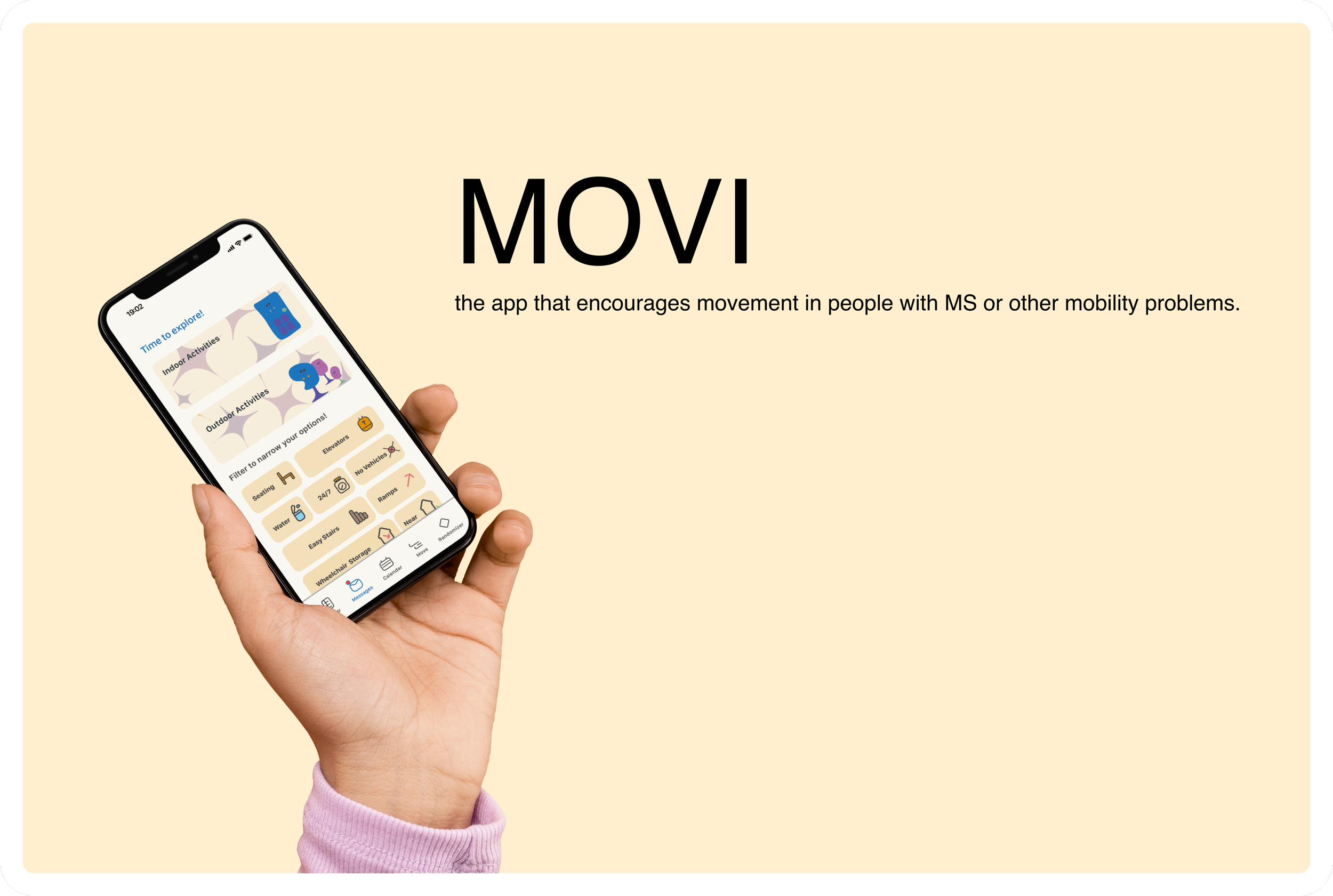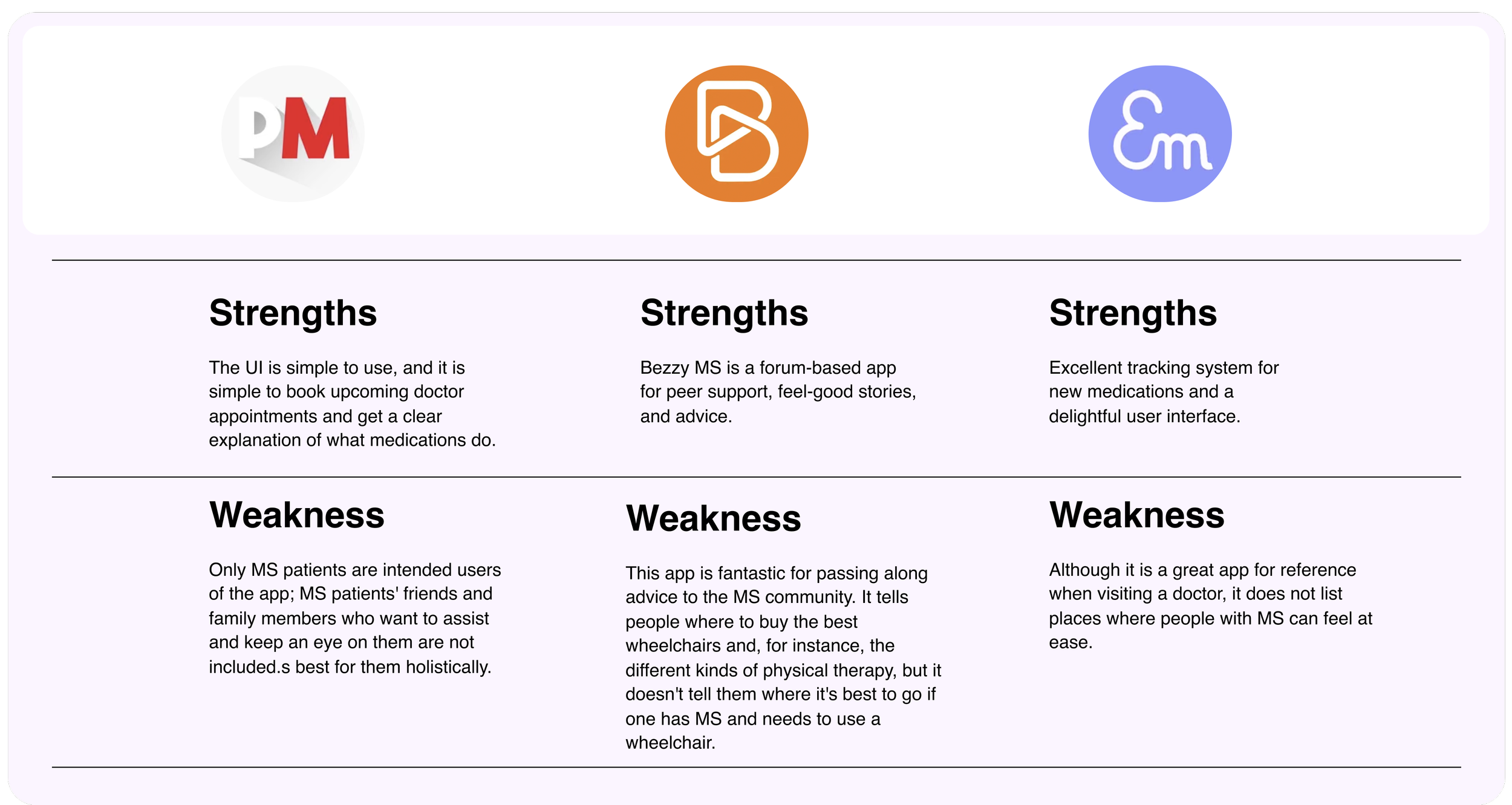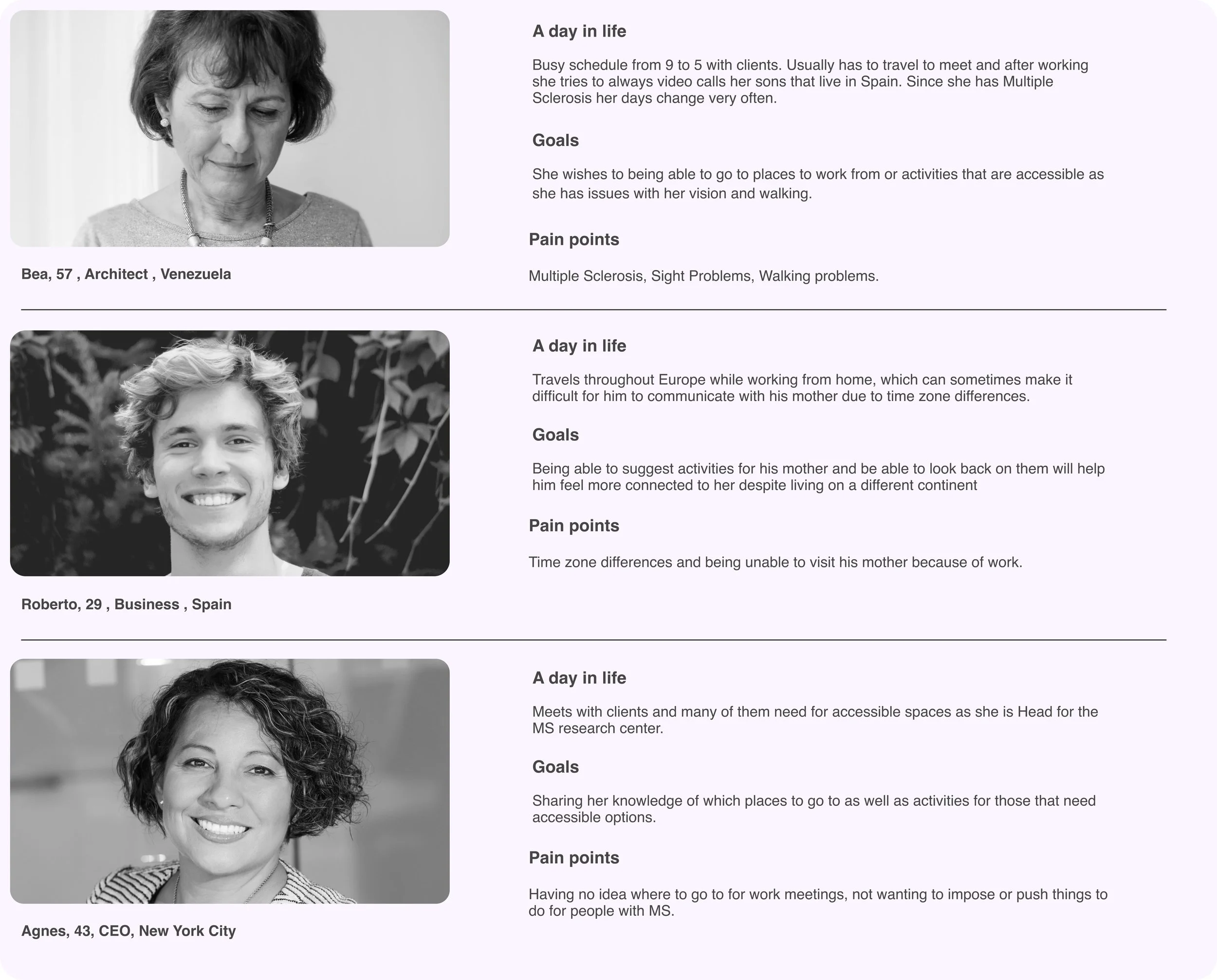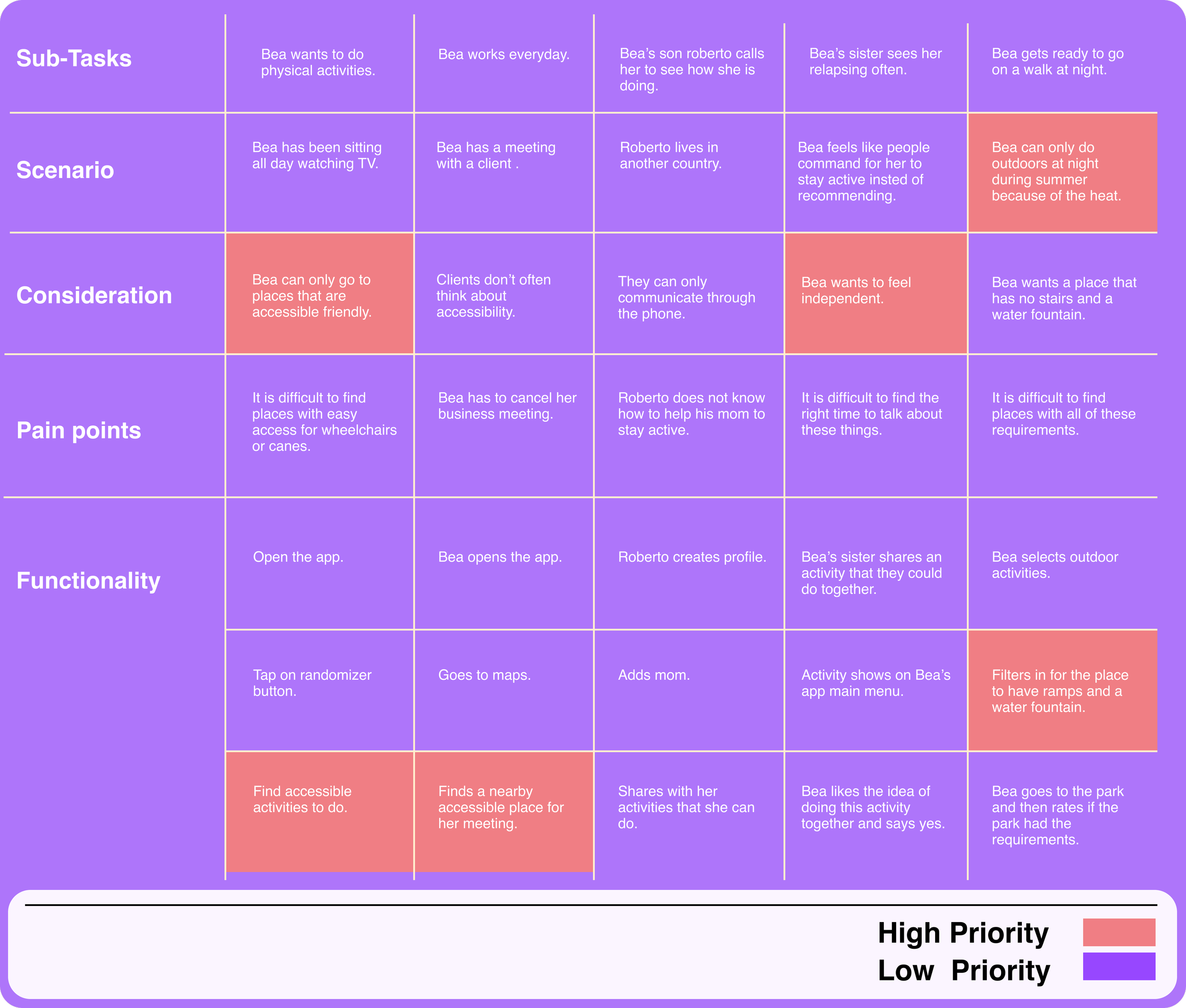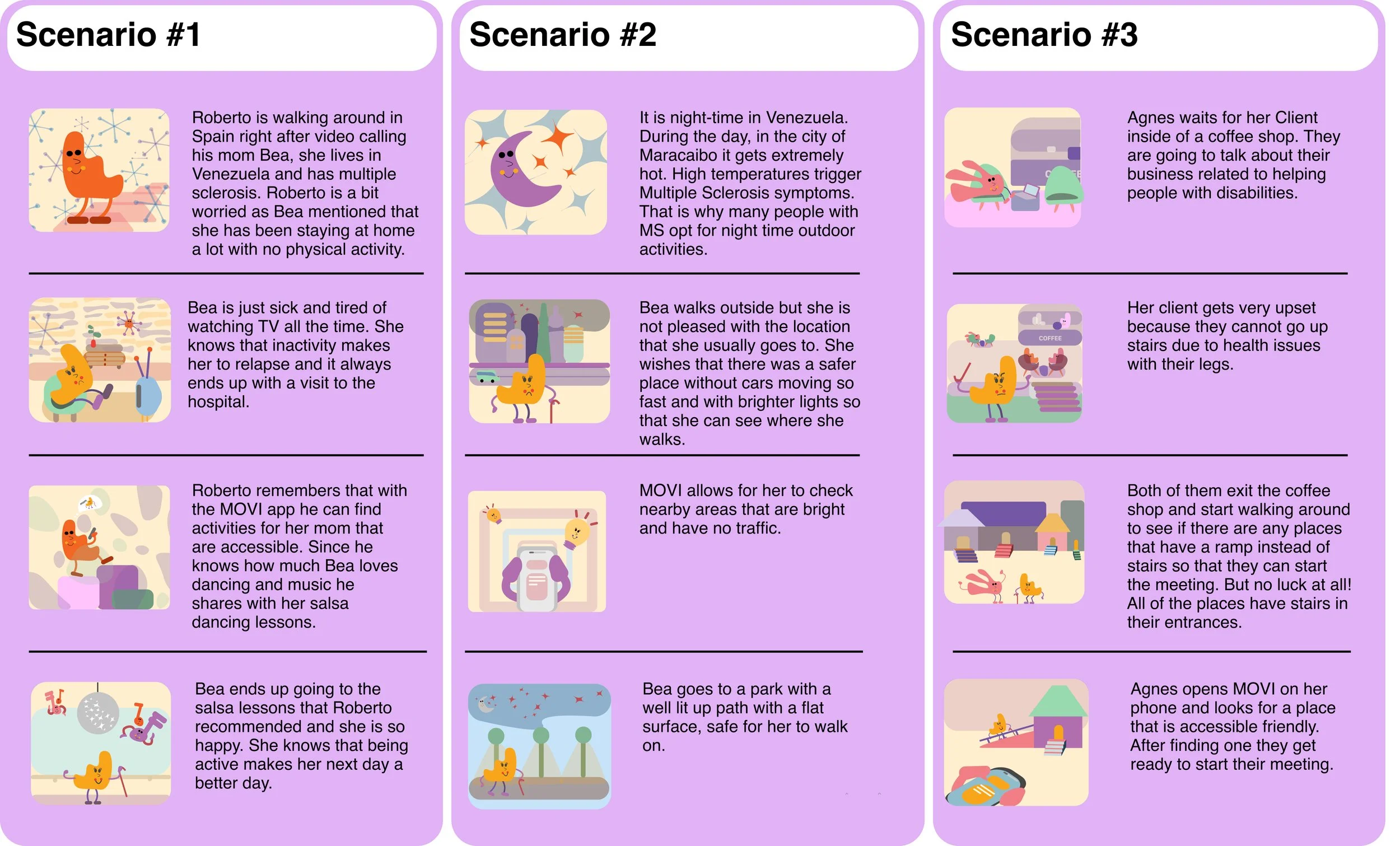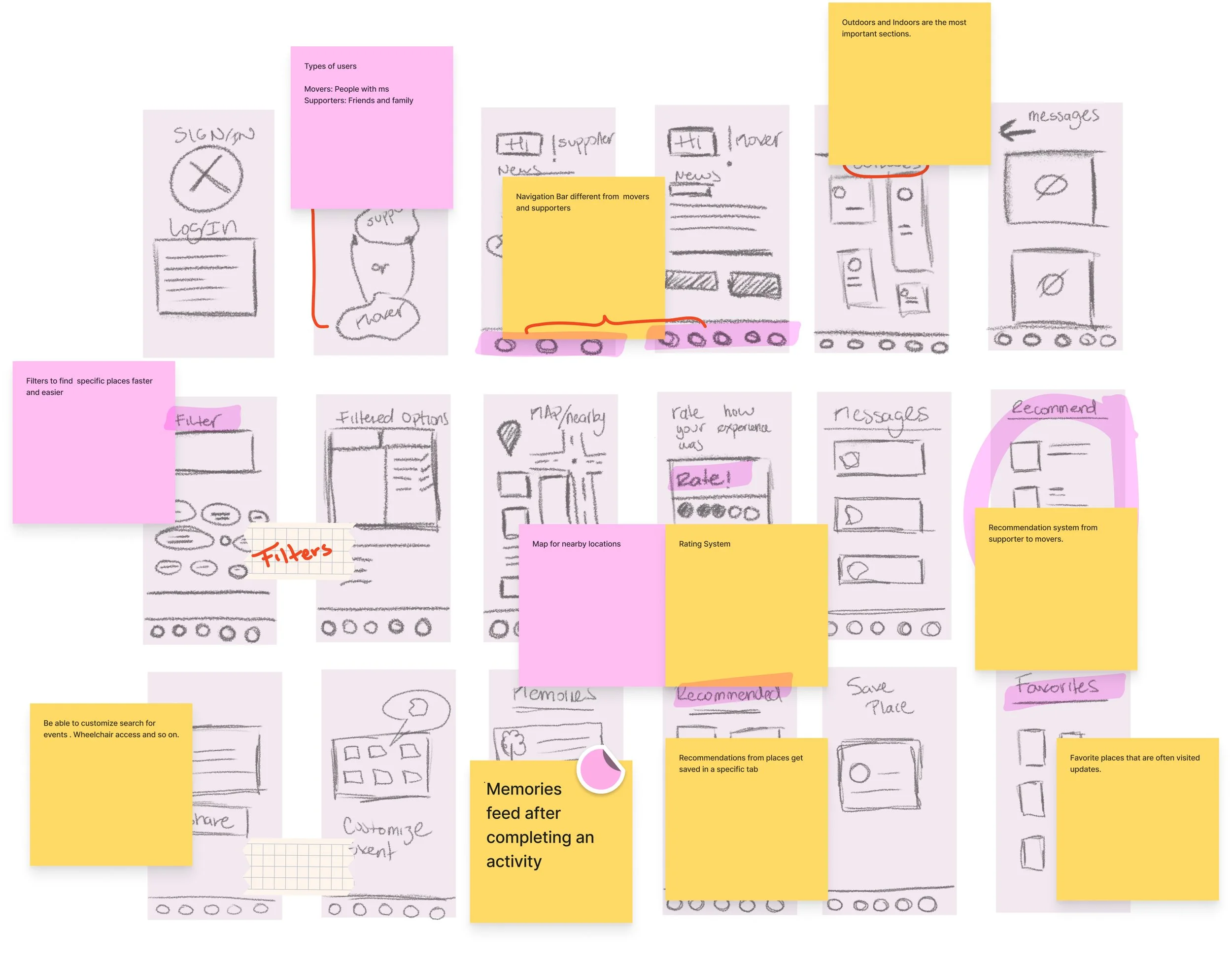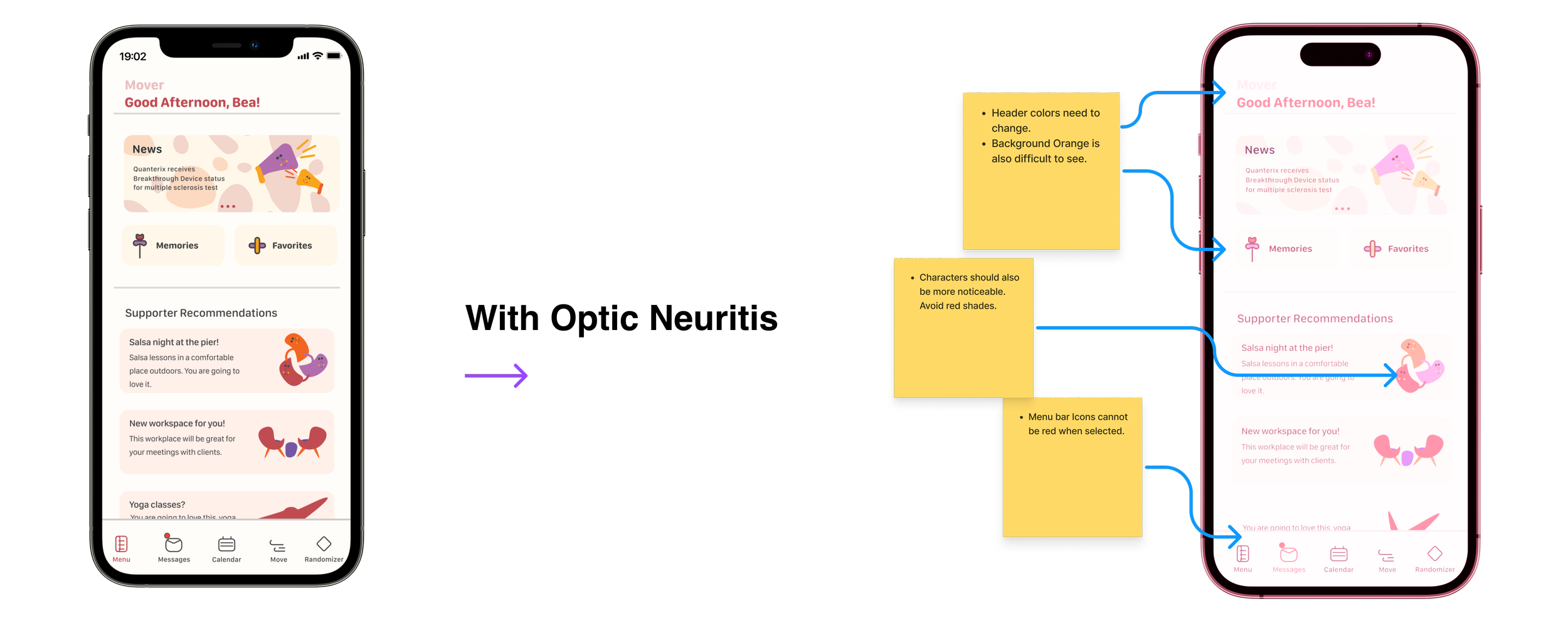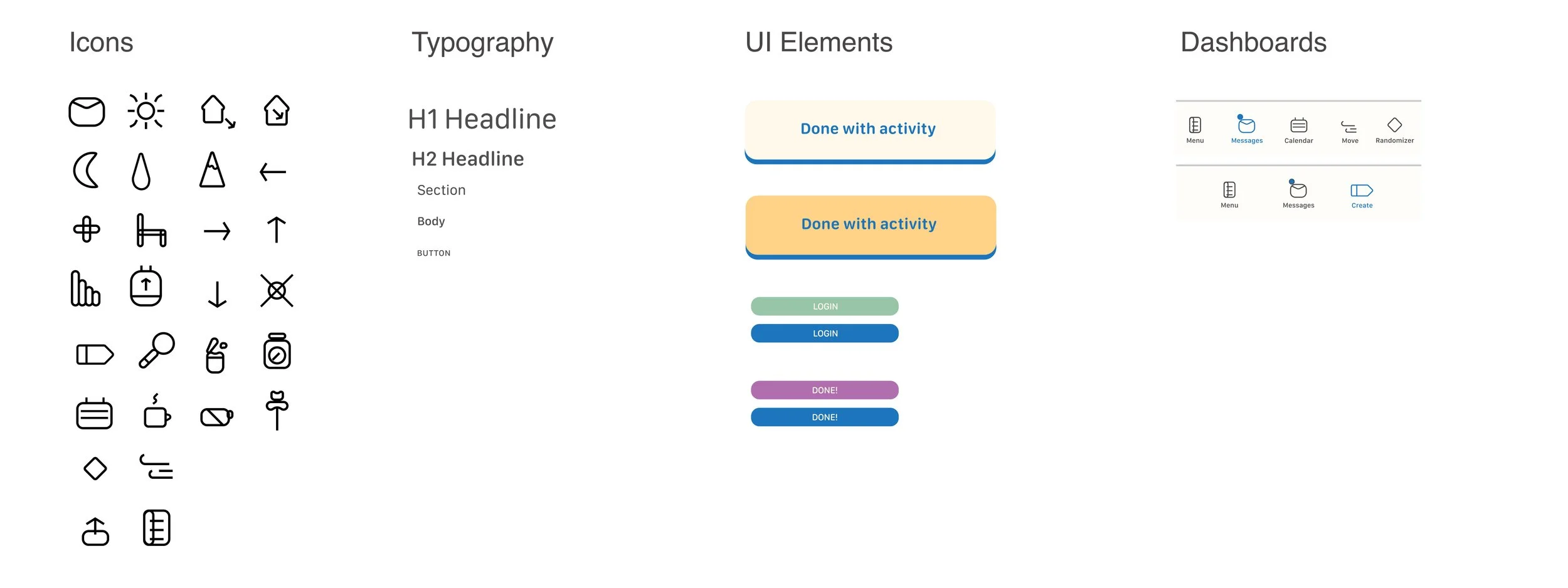Duration
9 Weeks
1 Project Cycle
Team
UI/UX Mentor
UX Designer
Role
UX Researcher
UI Designer
Project Overview
People with multiple sclerosis are more susceptible to relapsing when they become inactive. Relapses may also be caused by other factors, such as extreme heat or dehydration. To help people with MS maintain their mobility, it might be advantageous to develop an app that suggests accessible activities or locations.
My Role
Students at Pratt Institute will be required to create a mobile application of their choosing by 2022. Since I grew up with an aunt who has lived with multiple sclerosis for the majority of her life, I made the decision to develop an app that would be useful for her and other people who live with a disability that makes life difficult for them, from thorough MS research to building an entirely new user interface.
GATHERING INFORMATION
Around 1 million people are living with multiple sclerosis (commonly known as MS) in the United States, and about 2.8 million people around the world have the disease.
An estimated 2.5 millionTrusted Source people live with MS worldwide. An estimated 200 new cases are diagnosed each week in the United States, according to the MS Discovery Forum.
The National Multiple Sclerosis Society, recommends that people living with MS get at least 150 minutes of exercise or lifestyle physical activity every week, according to an article published in Multiple Sclerosis Journal in March 2020.
Overall Idea of the App
According to the CDC, for many people with disabilities and those who care for them, daily life may not be easy. Disabilities affect the entire family. Meeting the complex needs of a person with a disability can put families under a great deal of stress—emotional, financial, and sometimes even physical.
This app's goal is to make it possible for people with MS to use it with friends, partners, or family members. People with MS will be able to find activities or locations that are accessible to them thanks to the app. Supporters of people with MS also have the option to make non-intrusive suggestions and recommendations for events or locations.
Interview Topics
What is your age?
It is important to create a sense of community with family and friends
What is the most challenging task?
What is helpful in moments of stress?
How could an app help you?
What do you not want an app to do?
What is something that you can’t do because of MS?
Is it easy or difficult to meet with people outside of your home?
User Interviews Explanation
I talked to close friends and family members who had MS or other chronic illnesses that affected their mobility. In addition to in-person interviews, some were conducted via Zoom and WhatsApp. There were a total of 7 individuals who were able to discuss their perspectives on what it is like to live with MS or another illness that limits mobility.
Flow Chart
Scenarios
Lo-Fi Wireframes
Hi-Fi Wireframes
After carefully defining "movers” (MS sufferers) and "supporters,” it became clear that the bottom navigation bar needed various icons for ”three for supporters and five for movers.” It also became apparent that the most crucial screens would be those that let users filter the kinds of activities or locations they want to visit, distinguish between outdoor and indoor activities or locations, show what is nearby on a map with ratings, and, finally, have a random activity generator.
Visual Design
After 3 different iterations and consultations with the UI/UX mentor and talking to users, it was apparent that the design had to follow accessible parameters.
Having background colors or shapes that are organic were uncomfortable for the users. And another finding was made during the usability testing. Optic neuritis , which refers to inflammation of the optic nerves, is a common symptom of MS, affecting about 70% of patients at some point in their lives. Such inflammation affects with the way in which colors are perceived.
Having a background color for the navigation bar is also problematic as it is hard to see.
Additional usability tests
Further usability testing revealed that many MS patients experience vision problems, including the inability to perceive certain colors, such as red. So, when the right questions were asked, such as "What color is the most difficult to see?" four out of the seven participants responded with red. To better simulate the effects of having optic neuritis, the saturation would be reduced in the UI's subsequent step.
Conclusion
It is extremely important to design with accessibility in mind; therefore, I would like to investigate further what really causes people with MS to have a better overall interaction with an app. Maybe having a better placement for the buttons as it could be hard for them to move their finger to reach from one side of the screen to the other.
Designing for something specific allows not only for people with MS to utilize it but also for those that have other mobility issues.
Asking more questions about the UI when conducting usability testings
Future Ideas
Creating a way for business owners to register as users and post information about their accessible friendly locations.
Adding a voice assistant
having a section where instructors or coaches of fitness can publish their activities that are accessible.
